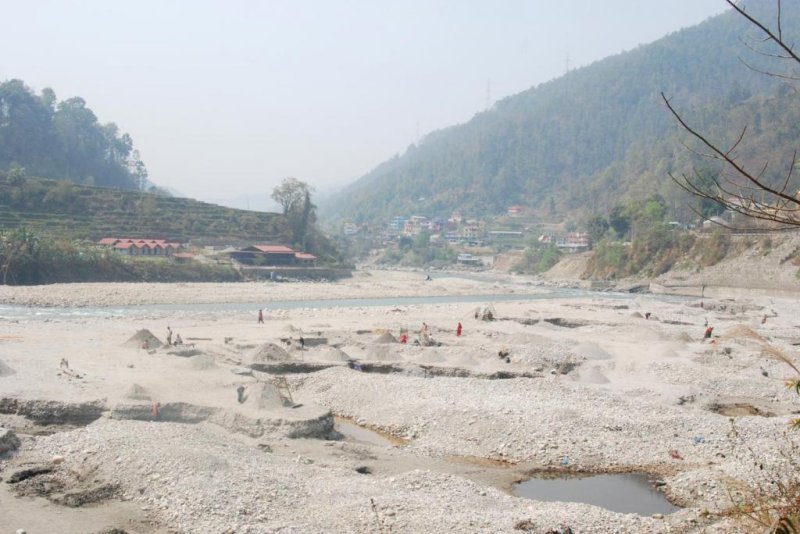Researchers say that research is needed on the effects of the sand industry -- including sources such as this sand pit in Sunkoshi, near Kathmandu, Nepal -- on the environment, with an eye on sustainability. Photo by Bibek Raj Shrestha
May 21 (UPI) -- The authors of a new research paper want scientists and policy makers to start considering the sustainability implications of global sand use.
Though not as overtly destructive as oil or coal, sand, the authors argue, is a valuable finite resource -- the extraction of which can cause considerable environmental damage.
Sand may seem plentiful, but as a key ingredient in both concrete and glass, it's used for everything from building roads and bridges to windows and phone screens.
In the latest paper, published Friday in the journal One Earth, scientists argue that the global economy's seemingly insatiable appetite for sand is harming the environment, accelerating climate change and even fueling social conflict.
"With this paper, we look forward towards what we need to do as a society if we want to promote a sustainable consumption on global sand resources," lead study author Aurora Torres said in a press release.
"A drastic problem calls for drastic solutions -- truly doing this differently to put aside problems and create pathways to sustainability," said Torres, a researcher at Michigan State University's Center for Systems Integration and Sustainability.
Though the aim of the paper was to shed light on the sustainability issues associated with sand use, researchers hope their work will ultimately inspire solutions.
To meet human development needs without overtaxing the planet's natural resources, scientists suggest significant policy reforms are necessary.
To provide an overview of the many environmental and socioeconomic problems caused by sand extraction, the paper's authors recruited the expertise of a variety different scientists.
"Collaborating across the research disciplines made it possible to fit the puzzle pieces into a full picture," researches said in the press release.
Rather than focusing on single extraction sites, which many previous studies have already done, the researchers looked at the "physical and socio-environmental dimensions of sand supply networks."
This allowed them to explore the links between sand extraction, processing, distribution, economics and policy to craft a deeper understanding of these networks' stresses on both nature and people.
For the study, scientists adopted a telecoupling framework, which highlights the social, ecological and economic impacts of the global trade relationships between human and natural systems.
By integrating the framework with what's called material flow analysis, researchers were able to identify the full scope of the sand economy's environmental and socioeconomic impacts -- from extraction sites like mines to consumption sites in cities, as well as the many transport corridors in-between.
"Simple views cannot solve complex sustainability challenges," said co-author Jianguo "Jack" Liu, director of MSU-CSIS. "New ways like the telecoupling framework help untangle and embrace the complexity of global sand challenges and point the way toward effective solutions."
The authors of the new study also considered the geological processes -- including deposit, flow and accumulation patterns -- linked with the most important construction aggregates.
In addition to collecting naturally formed sand and gravel, some companies also blast and crush rocks to meet demands for construction aggregates.
Economists predict demand for construction aggregate will double over the next few decades. To head off mounting environmental problems, researchers suggest solutions are needed sooner rather than later.
In the new paper, the authors call for a multifaceted approach to sand sustainability.
Policies are needed, they say, to reduce material use and encourage more compact development, as are reforms to bolster markets for construction and demolition waste.
"As with climate change, there is not a single solution but multiple entry points for more sustainable consumption," Torres said.















